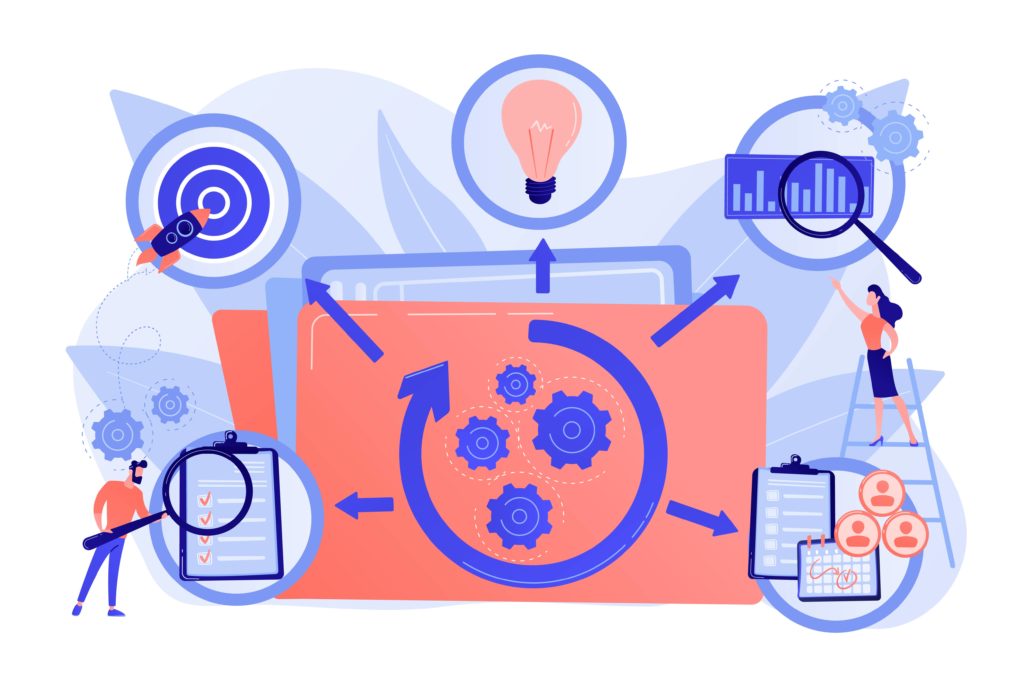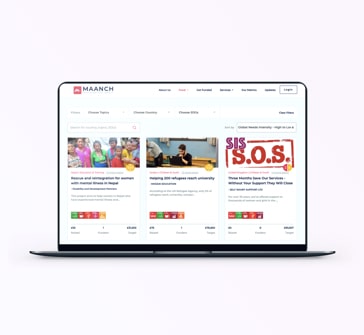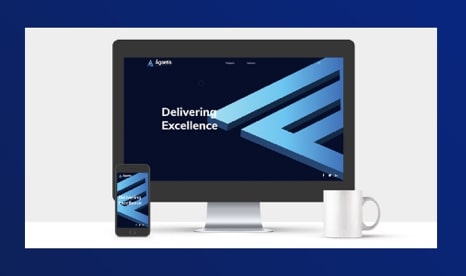Reading time: 8 mins
SEO: Everything You Need To Know!

SEO strategy is one of the most important components of any website that intends to rank well on Google. An SEO strategy is one of the most influencing components of any website that intends to rank well on Google. It involves optimising content, using keywords, and ensuring the website is well-structured and easy to navigate. These strategies are also critical for increasing website visibility, improving user experience, and driving more website traffic.
To help you with SEO, we have created an exhaustive list of SEO tools, guides, tools, and so much more. Let’s go!
Feel free to jump to the following sections:
SEO Checklist for High Rankings
What is SEO?

Search engine optimisation (SEO) helps improve your website’s search engine rankings. The better your website is optimised, the higher its rank will be in search engines. By doing so, your visibility online will be improved and your traffic will be increased, allowing your products and services to reach your target audience faster.
Types of SEO:

1) On-page SEO involves optimising your website content and HTML source code.
2) Off-page SEO focuses on improving your website ranking by building links, increasing brand awareness and improving visibility.
3) Technical SEO considers the technical aspects of your website such as site speed and indexing.
Each type of SEO has its own unique set of techniques and strategies that can be used to optimize a website for better search engine rankings. Knowing which type of SEO to use and when is key to success.
What is On-Page SEO?

On-Page SEO includes all the elements that appear on your page to improve your search engine rankings. The On-Page SEO strategy includes everything from your page title to meta descriptions, HTML title tags, user-friendly content, and mobile-friendly websites. Content from your website is then crawled and indexed by search engines. So you can rank higher on websites with the help of On-Page SEO.
Your website visitors can see the changes and modifications you make to optimise it, but off-page and technical SEO aspects are only sometimes visible. The term “On-Page SEO” comes from this concept.
A properly planned and implemented On-Page SEO strategy can be very powerful. Using SEO hosting to optimise your website will become second nature once you get the hang of it. Listed below is an On-Page SEO checklist to guide you through the process.
You might be interested in: “What are Backlinks for SEO?”
How to improve On-Page SEO:

- Find the User’s Search Intent
The first thing you should do before even writing your website’s content is to figure out what your website visitors are looking for. If enough people find the information on your website to be exactly what they’re searching for, then your website will rank higher over time.
- Quality over Quantity
Content is the essence of any website, and it must be prioritised above all else. Rather than focusing on quantity, it is critically important to focus on quality when it comes to your website’s content. It should be more focused on answering the user’s query and being user-friendly. The better optimised the content is, the more satisfied the user will be.
- Optimal Keyword Frequency
Other than quality content, it is important to have a good keyword to content length ratio, enough so that you have a proper keyword density in your content and it is not repetitive. Whether it is a title tag, your meta description, or your blog, spamming too many keywords in short content can make your website look tacky and unprofessional.
- Title tag and Meta description
Your focus keyphrase, or keywords, should appear in both your title tag and meta description. Make sure the length of your title tag and meta description isn’t too long. To grab the attention of users instantly, both title tags and meta descriptions must be brief, informative, and catchy.
- Increase Dwell time
It is important to give users what they are searching for in order to increase dwell time. If you provide quality information to users, they are bound to stay on your page for longer. The more detailed information and services you provide, the better.
- More Internal Links
The purpose of internal links is to encourage the visitor to stay on the website for as long as possible. With the help of internal links, you can hyperlink to other pages of your website to answer more queries and give the user the information they are looking for. The more pages the user goes to on your website, the more traffic you get.
- Page Loading Speed
Speed is a very crucial part of any website, especially when it comes to On-Page SEO. With the introduction of fast internet speeds, users tend to be impatient. If your website is taking a lot of time to load, the user may skip to another website to help solve their queries, thus increasing the bounce rate of your website.
- Understand Click through Rate
Your website’s click-through rate, or CTR, is a method of measuring the success of your advertising campaign. For example, CTR can be used to evaluate which sales campaign was the most successful when you have a sale banner live on your website.
- Don’t Overcrowd your Website
It is important to use white space and avoid overcrowding your website because too much information on the screen can overwhelm users. As a result, you are actually defeating the entire purpose of giving essential information to your website’s visitors. In addition, an overcrowded website might appear unprofessional, spammy, and tacky, which will increase bounce rates.
- Mobile-friendliness
Google is without a doubt one of the most well-known search engines. As a result, we pay attention to it when it comes to SEO. Recent news reports indicate that Google favours mobile-friendly websites. In order to improve rankings, you should not only select a content layout that is mobile-friendly but also a website design that has been optimised to be mobile-responsive.
11. Use SEO Tools
Last but not least – SEO Tools. If you don’t want to go through the hassle of doing all the SEO work manually, you can always opt for SEO tools such as Ahrefs, Ubersuggest, SEMRush, and so on to make your work easier and less time-consuming. You do not have to spend hours researching keywords and analysing data when you use SEO tools. Using these tools, you’ll be able to determine which parts of your SEO strategy are working and which areas need a little bit of adjustment here and there.
The importance of On-page SEO for any website cannot be overstated, and having a well-developed strategy is vital.
You might be interested in: What is Black Hat SEO & Why should you avoid it?
SEO Checklist for High Rankings:

- Let Your Keywords Do The Job.
Using keywords is the most organic way to increase your website’s search rankings. You can understand where to get your keywords once you have a defined niche. You should also do thorough market research and see what your visitors demand. It’s important that you put in the time to ensure that you’re targeting the right audience with the right keywords to make your results more effective. You should conduct keyword research from time to time to find keywords that are relevant to your target audience.
You can use various tools such as Ubersuggest, Ahrefs and SEMrush to find relevant keywords for SEO.
- Your Page is Loading…….Oh no!
No one wants to visit a slow website in a world that runs at breakneck speed. Sites that are slow make for bad user experiences. Moreover, Google has confirmed that page experience will become even more important in its search engine ranking algorithm. Users continue to expect more from your site, so make sure it loads quickly.
- Competitive Analysis for the Win
You need to understand what your competitors are doing to thrive in their businesses. The first step to achieving this is to assess the strengths and weaknesses of your competitors. Follow the Golden 3Ps rule – past, present, and future potential. Additionally, the key to gaining an edge over your competitors is to identify who they are, what benchmark methodologies they use, and the level of competitiveness you have among all of them. Find out how rivals generate traffic, assess it, and see their popular content, offers, and discounts. The process of understanding your competitors requires time and effort, but it is beneficial in the long run to your SEO efforts.
- Adding Links is a Must.
It is best to use links whenever possible in your content. You can also find websites that provide internal links to yours. It is possible to use backlinks strategically for networking purposes. Make sure your page has internal links that help Google understand what it is about. In addition to optimising your content, it helps search engines rank your website higher, and also makes browsing your website easier for users.
- It’s all about the Images.
Make sure your images are optimised. It is essential to avoid using too many images, as well as to have an easy-to-use navigation system. Images play an important role in SEO, from accurately categorising them with relevant file names to optimising their size and quality. Every page on your website should contain images to make it more aesthetically pleasing to the users.
You can find many websites that offer a variety of images that you can choose according to your website’s design.
- Make them Search!
How do you make your visitors search for their queries? How does one ensure that your users are finding the right solutions to their problems? The answer is right here – By recognising your user’s search intent. Generally, “search intent” refers to the reason for a searcher’s query. Unless your page solves the reader’s problem, you will have little chance of ranking. You need to assess your users’ search intent, find out what they want to know and deliver it to them.
- Mobile-friendly websites are the way forward.
The future of websites lies in mobile-friendly design. The content of a non-mobile-friendly website must be panned or zoomed in order to be read. This frustrates users and leads them to abandon the site. The mobile-friendly version, on the other hand, is easily usable and readable.
- Create SEO-optimised URLs.
It is easier for search engines to crawl and understand your pages if they have an SEO-friendly URL structure. It is also important that the URLs of your pages are simple and descriptive for users. Add this point to your SEO checklist!
- Improve your Meta Description.
In terms of organic ranking, it is extremely important to optimise and add title tags to your website. You can use it to give users a brief overview of what they need to know. Make sure it grabs the attention of your users instantly!
- Be creative with your title tags!
The easiest way to improve your ranking on Google is to optimise your title tags. You can use them to tell Google what the content of your page is. Specify the title of your webpage using the title tag so that it appears in search engine results and social media sites.
In a world where everyone claims to be the greatest, you must stand out to succeed, and SEO plays a key role in this. There are many aspects of SEO that need to be considered, but one must begin somewhere. With the checklist items above, you’ll be well on your way to higher rankings. Hope this helps you gain that sweet competitive edge!
Is SEO really worth it?
The Search Engine Optimisation process can help you understand who your target audience is, what they demand, and how to engage them more effectively. By integrating our SEO checklist into your website, you can differentiate your brand from others and develop your own unique identity.
When it comes to search engine optimisation, several factors must be considered. Using this checklist is just the first step toward achieving your SEO goals, but even the most ambitious person must begin somewhere!
Our team at Agaetis Technologies knows all the ins and outs of the SEO process. Connect with us today!


















